Soy sauce is a celebrated cooking staple that was borne out of Eastern Asia. Over the years, soy sauce has spread to every country on the planet and some of these countries have even developed their own tasty alternatives.
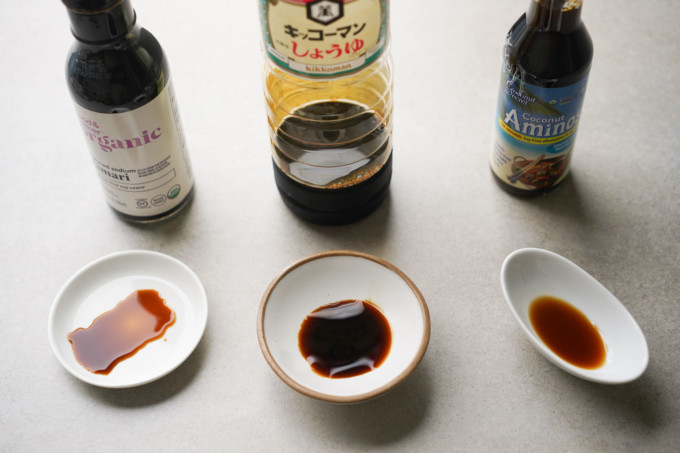
I am going to explain two such alternative options: tamari and coconut aminos. If you are unfamiliar with those two sauces, you’ve come to the right place.
What Is tamari?
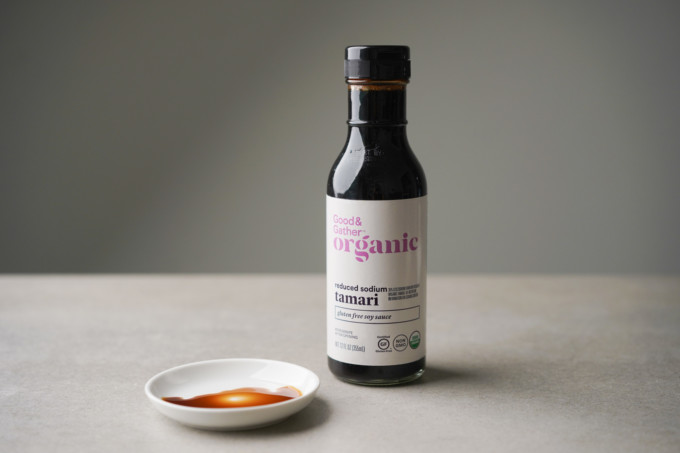
Contrary to popular belief, tamari is not the same condiment as soy sauce. Soy sauce was developed in Ancient China thousands of years ago under the name ‘Chiang’. Since then, many other countries have appropriated the sauce while offering their own unique versions. Tamari is an offshoot of soy sauce that is primarily associated with Japan. Tamari offers many similar flavor complexities as soy sauce but with a few key differences. The primary difference that I want to heavily emphasize is this: tamari is made without wheat and that makes tamari an ideal sauce for gluten-free individuals.
Tamari vs. soy sauce
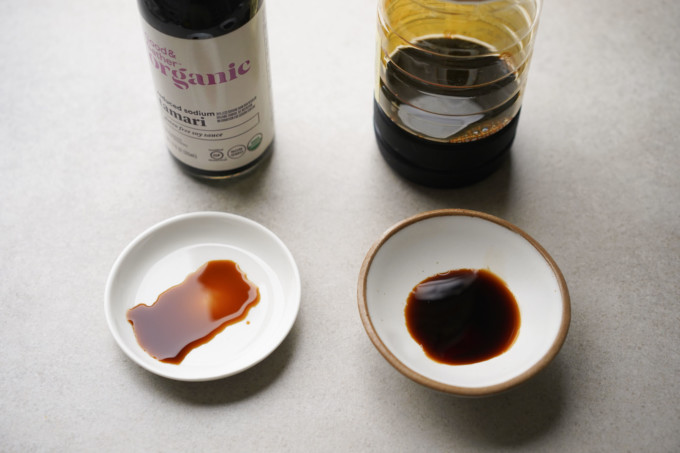
From the outside looking in, tamari and soy sauce appear to be very comparable condiments. Both sauces are possessed of a rich brown color and their flavor profiles both are enhanced by a rich addition of salt. Still, there are some complex differences if you look a little bit closer. Tamari tends to be darker in color and richer in flavor when compared to traditionally fermented soy sauce. Tamar is traditionally thicker, as well. If you were to compare and contrast tamari and soy sauce directly, you’d find that the tamari tastes more balanced with less of a salty, harsh bite.
Traditionally, you can store unopened tamari on a shelf for up to two years. Once opened, it is best to refrigerate your tamari. For the ideal flavor profile, you should use your tamari within three months after opening the bottle. Soy sauce profiles in much the same way with regards to its shelf life.
Primary ingredients in tamari
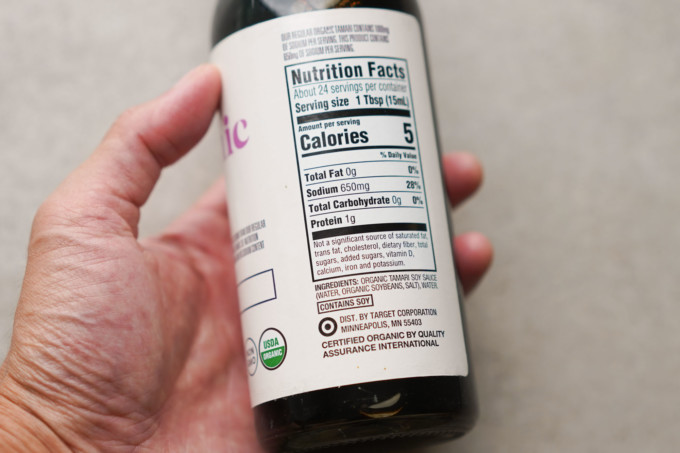
I can use tamari as a dipping sauce, a marinade or even for a stir-fry. Tamari is an excellent addition to a wide variety of meals due to the fact that it can be organic, low in sodium and still powerful in flavor. Tamari is a wonderfully simple sauce that is comprised of three essential ingredients:
- Soybeans
- Salt
- Water
- (Optional) Preservatives such as alcohol.
The flavor of your bottle of tamari can be challenged based on whether you opt for organic or inorganic versions of the sauce. The primary differences between organic and inorganic tamari can generally be focused on the factor of preservatives. Preservatives, such as the alcohol we listed above, will give your tamari a longer shelf life. However, these preservatives can leave a slight chemical aftertaste when compared to organic tamari.
Additionally, I can find tamari that does have wheat in it, as well. There are ‘low wheat’ options of tamari out there, so be sure to look for authentic tamari if you are gluten-free or suffering from Celiac’s disease.
While there are countless varieties of tamari for sale on the internet, a few brands routinely find themselves rising to the top of the list. Listed below are my three favorite tamari options.
- San-J – The team at San-J offer a variety of different tamari options, all focused on the Japanese version of organic tamari. All of San-J’s tamari products are gluten-free, meaning that they were brewed without wheat. San-J is an industry leader in tamari production.
- Eden Organic – Eden Organic offers a thicker, heavier tasting tamari. This style of tamari is excellent in a stir fry and great as a dipping sauce for sushi.
- OHSAWA Organic Wheat Free Tamari – This all-organic tamari sauce is free of wheat and features reduced sodium. – Brewed in cedar kegs in Japan, this is as close to original tamari as you are ever going to find.
There are as many Tamari variations as I have the time to browse the internet to find. However, the three I highlighted above all pack a flavorful punch in an authentic bottle.
How Is tamari made?
Tamari follows a similar path of production as soy sauce, though there are some marked differences. The largest difference is that tamari is the byproduct of miso paste and no wheat is used during the sauce’s production. Let’s outline the exact process that San-J follows when making their tamari.
- First, soybeans are soaked in water before being cooked in a steam cooker.
- These beans are then shaped into nuggets and dusted with aspergillus oryzae. Aspergillus oryzae is more commonly known as ‘Koji‘ in English. Koji is a type of mold that has been embraced by East Asian cuisine.
- The coated soybeans are then placed into an incubation chamber where temperature and humidity are carefully calculated. With high heat and high moisture levels, the Koji we mentioned above assists in developing a mold that covers the entire pan of soybeans.
- Over a two day span, the nuggets form a yellow mold.
- Now, the soybeans are transferred to a fermentation tank where salt and water is then added. This mixture is known as moromi.
- The moromi is then aged for up to six months.
- After aging, the moromi is pressed through a cloth, thus yielding raw tamari. This tamari is then pasteurized and filtered.
What are coconut aminos?
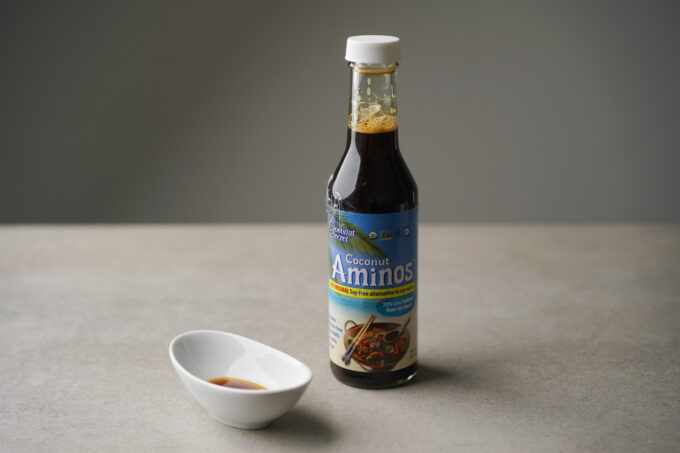
If soy sauce and tamari don’t do the job, coconut aminos offer a viable alternative. Coconut aminos are completely free of soy and consist of just two ingredients: coconut tree sap and salt. Coconut aminos have been embraced by people following the paleo diet, specifically.
Coconut aminos vs. soy sauce
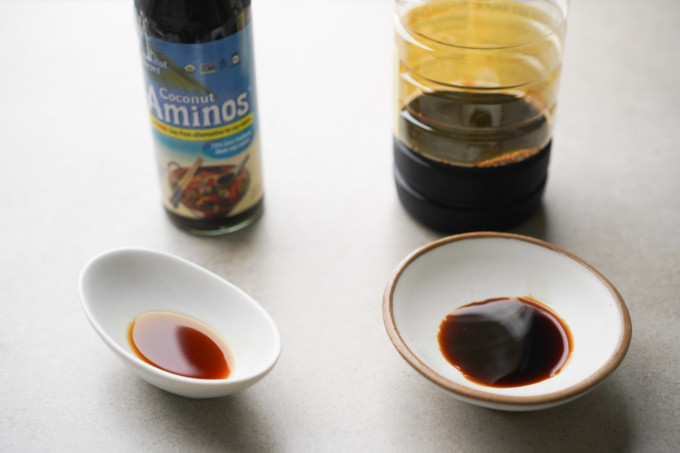
At a glance, I can understand how people could confuse coconut aminos with soy sauce. Coconut aminos are dark in color and possess a salty, sweet flavor. While coconut aminos resemble soy sauce, the fact that they are both soy free and gluten free makes them tremendously flexible in the kitchen.
If I were cooking a stir-fry for a dining room filled with dietary restrictions, I’d likely reach for coconut aminos before either soy sauce or tamari. The flavor profiles among the three are similar enough that there isn’t much of a difference.
Unopened coconut aminos can last on the shelf for well over a year. Opened coconut aminos should be transferred to the refrigerator where they can last for up to six months.
Primary ingredients in coconut aminos
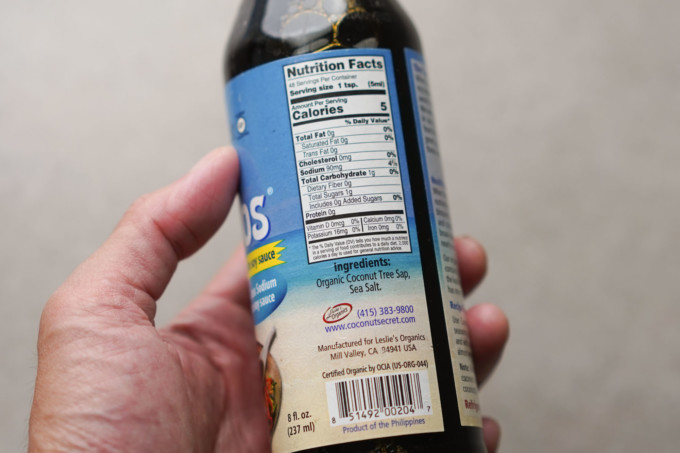
Coconut aminos are incredibly simple sauces. This type of sauce has two ingredients:
- Coconut Tree Sap
- Salt
Coconut aminos also benefit from having 17 different types of amino acids. These amino acids do wonders for the human body by boosting energy levels, improving the immune system and even helping to repair the muscle and the brain.
For readers who are interested in trying coconut aminos at home, here are a couple of the top brands on the market.
- Coconut Secret Organic Raw Coconut Aminos – Completely raw and all organic, this is as foundational a sauce as I could want for my kitchen. Slightly sweeter than traditional soy sauce, this brand of coconut aminos is a great soy sauce alternative.
- Bragg Organic Coconut Aminos – This line of coconut aminos is significantly less sweet than soy sauce and the Coconut Secret brand highlighted above. With a slight spice, Bragg Organic’s line of coconut aminos is ideal for stir-fry dishes and marinades.
- Kevala Organic Coconut Aminos – Certified USDA organic, Kevala offers a coconut aminos bottle derived from the aged sap of coconut blossoms. Non GMO and soy-free, you can’t beat this brand.
How Are Coconut Aminos Made?
Coconut aminos is made in a slightly similar way to that of soy sauce. The process for coconut aminos is much shorter, however. Coconut aminos are made from nectar derived from the coconut blossom. This nectar is commonly called sap. The harvested sap is then put into a fermenting vessel where it is left to ferment for months on end with a tiny portion of salt added. The fermentation device will change based on the individual company and their ultimate flavor goals.
Conclusion
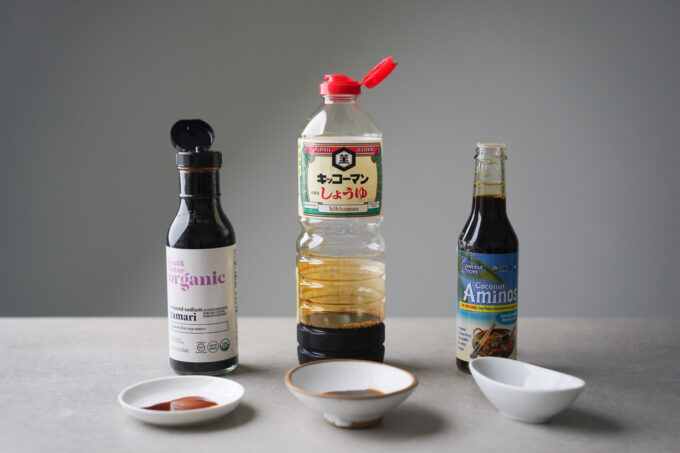
Tamari, soy sauce and coconut aminos all offer their own unique benefits. Coconut aminos and tamari are great variations to authentic soy sauce because they offer a unique flavor profile in addition to their gluten-free and soy-free properties. If I were running a kitchen other than my own, I’d make sure to have all three bottles on hand.







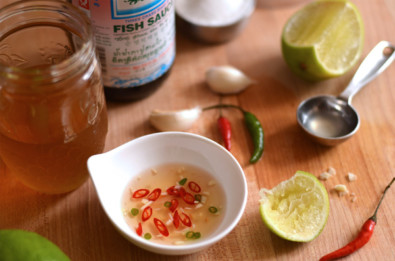


Thank you for the education.